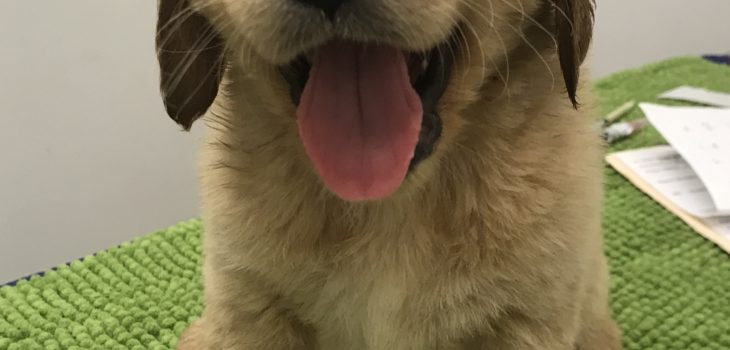 Blog
Blog
Common Pet Poisons: How To Keep Your Pets Safe
 March is Poison Prevention Awareness Month. Every year, thousands of pets are accidentally poisoned by common household products, foods, and plants. Here are some of the most common household hazards:
March is Poison Prevention Awareness Month. Every year, thousands of pets are accidentally poisoned by common household products, foods, and plants. Here are some of the most common household hazards:
1. Human medications.
According to ASPCA’s Animal Poison Control Center, 50% of their calls are related to the accidental consumption of human medications. Dogs, in particular puppies, will chew pill vials because they rattle like a pet toy, and may eat the pills. Some common medications that can be harmful to our pets include heart medications, blood pressure medications, antidepressants, and opioids. Even medications that are “safe” can be toxic if an entire vial is consumed. In addition to prescription medications, over the counter (OTC) medications can be just as deadly. Sometimes well-meaning pet parents will give their pets an OTC medication assuming it is safe because it is available without a prescription. Unfortunately, OTC medications can be deadly to our pets, even in small doses. For example, Tylenol (acetaminophen) is highly toxic to cats and a dose as small as half a pill can be lethal.
Most people know that chocolate is toxic to pets, yet chocolate-toxicity is one of the most common pet poisonings. Unfortunately, pets love chocolate almost as much as we do, so it is important to always keep chocolate out of our pet’s reach. Other common toxic foods include grapes and sweets containing xylitol. Grapes is toxic to dogs and even small amounts can cause kidney failure. Xylitol is found in sugar-free sweets and gums and is also toxic to pets.
3. Household cleaners.
Pet-proof your home and keep household cleaners out of reach. Also remember to keep your pets away whenever using a cleaner on your counters or floors. Pets, especially cats, may accidentally ingest a harmful cleaner when they lick their paws.
4. Rodenticides.
Rodenticides (rodent poisons) are extremely dangerous to our pets as they are designed to attract and kill rodents. Unfortunately, they attract our pets as much as their intended targets, and they can be just as deadly to our pets. Rodenticides often contain anticoagulants, like warfarin, which causes internal bleeding. Other common rodenticides contain equally toxic ingredients such as bromethalin (damages the central nervous system), cholecalciferol (kidney damage), and zinc phosphide (damages the heart, brain, kidney, and liver).
5. Plants.
Many plants are toxic to our pets. Unfortunately, pets will often chew plants and ingest plants. Lilies are especially common during Easter and are highly toxic to cats. Every part of the plant (flowers, leaves, stems, and even pollen) is extremely toxic to cats. Before bringing home a household plant or bouquet, or planting a new plant in the yard, I always recommend checking to make sure that the plant is not poisonous to your pets.
6. Garden products.
Fertilizers can also be toxic to our pets. Ironically, environmentally-friendly organic fertilizers can be more dangerous than conventional fertilizers. Organic fertilizers often contain bone meal and feather meal, which attracts our pets. As a result, dogs will often consume large amounts of organic fertilizers. Bone meal can also contain bone fragments that can cause gastrointestinal obstructions.
Remember this list is not comprehensive. These are just some common household pet hazards. To learn more, visit the ASPCA Animal Poison Control Center website. Keep these household hazards safely out of reach. However, if you think your pet may have ingested something harmful, call your veterinarian, the local emergency veterinary hospital or the ASPCA Poison Control immediately. The sooner you treat a poisoning, the safer it is for your pet and the less expensive it will likely be for you.










